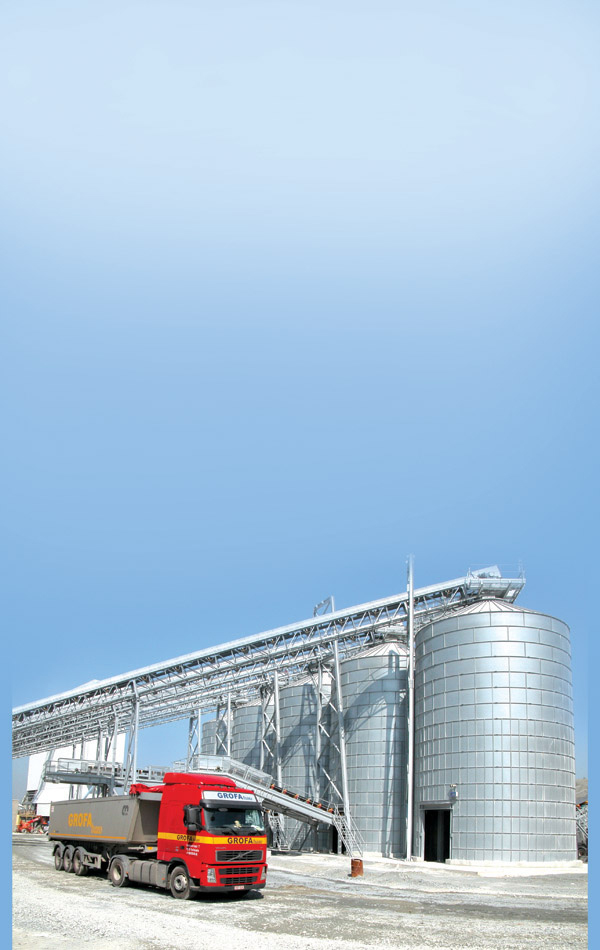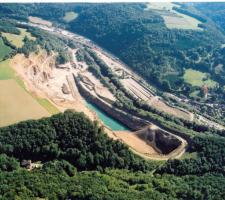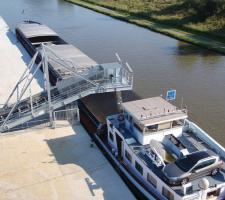
Tight environmental conditions and limited resources make the benelux aggregates market a challenging one
The Benelux countries - Belgium, the Netherlands and Luxembourg - are slightly out of the ordinary in the European aggregates arena in terms of steady demand, reliance on imports and high levels of recycling. But the regions' shortages caused by limits on space or geology and policies strongly influenced by green issues in recent years, mean that the challenges facing their aggregates markets are similar to those affecting the worldwide industry.
The lowland countries border the North Sea and are, as the name suggests, low. For most of the Netherlands and much of the northern Flemish-speaking part of Belgium, this means a geology without hard rocks or even much in the way of gravels, though Belgium has more resources of this kind. Luxembourg has no quarries to speak of and relies on imports
Belgian bonus
In the southern French-speaking parts of Belgium the geology is an older one, said Walter de Wos, a geologist at the Belgian Geological Service. "It is Paleozoic era with a variety of sedimentary rock including shales and siltstones and sandstone. In the Ardennes there is limestone too, used as building materials and as crushed rock." There is clay for brickmaking too.
One the very few igneous intrusive rock formations is found in the southern part too, at Lessines west of the capital Brussels, or where there is porphyry.
Some three of four major quarries produce rock here which is highly valued.
"The volcanic rock is exceptionally hard and crushed as an aggregate it is useful for road asphalt and especially surfacing" said Denis Mertens, general manager of the producer Gralex and also currently the president of the
"But even so 99% of the geology is sedimentary," continued de Wos. "In the north it is rarely old enough to have consolidated as rock and comprises detrital silicates, meaning sands and gravels. These are from the Tertiary period, around 65million years ago."
The geology of the Netherlands too is mainly sands and gravels, but here the age of the deposits is much younger, from the Quaternary period and as a result there is a very high proportion of very fine marine sands, as well as coarser sand and some gravel. The country is largely formed as delta from the major rivers of Europe including the Maas (or Meuse), the Scheldt and the Rhine among others. There are major areas of reclaimed seabed.
"Effectively we have no rock at all," said Pieter van de Wegen, an aggregates specialist at the IZGP Netherlands Aggregate Association, one of two bodies recently merged into the Cascade body representing dredging and quarry companies. IZGP represented the larger companies working nationally while sister organisation NEVRIP represented local companies.
The Netherlands also differs from Belgium because it was below the big ice sheets of the last ice age. "These stopped more or less at Belgium," said de Wos.
Finest sands were deposited in the seabed and during the last 2million years by the Alpine erosion running in the Rhine and the Ijssel. The Meuse, running into the southernmost Limburg region bordering France and Belgium, deposited much coarser material because of sea level drops and other factors during the ice ages. Most of the useful gravels are found in this region, which also runs into Belgium.
Urban influence
The geological differences are reflected in the aggregates industries of the two countries though there are also similarities. Biggest of these is a relatively dense population in both countries which finds expression in a greater hostility to the presence of gravel pits and quarries than elsewhere in Europe. Both countries have attempted to limit production to appease this. In Belgium there has been a full spectrum of production across the country with rock quarrying mainly in the French speaking sector and gravel and sand extraction from more localised pits in the north. Resources are sufficient in the south to allow export of crushed rock, primarily to the Netherlands, France and Luxemburg.
Resources in the Netherlands are very different because there are no rocks at all in the country. Until a few years ago the need was supplied by dredging of coarse sand and gravels, predominantly in the Limburg region and the deposits in the Maas (Meuse) valley.
There is also a major output of fine sand from dredging, sometimes as a by-product from widening and deepening sea channels and waterways and directly for the material itself. Some of this is land dredging or dredging of the many enclosed water areas in the country, but larger and larger amounts are marine-won supplies from North Sea offshore areas.
The fine sand won this way - mostly by such big dredging firms firms as Boskalis and Van Oord - is not suitable for use in concrete or asphalt but goes directly as "filler sand" for road and other construction. A large tonnage is exported primarily to Belgium, especially in recent years.
Demand
Total use of aggregate in Belgium is slightly less than the Netherlands at around 65million tonnes annually, according Mertens. "The usual mix of building construction and civil engineering demand for roads and
other infrastructure takes up the aggregates production, with the products going into concrete and asphalt as well as being used directly for fill and road base," he said.
Demand in the Netherlands is around 80million tonnes, according to figures from Cascade.
For both countries, and particularly the Netherlands, demand has been relatively constant over the years. "It has varied, of course, but in the last decade or so the fluctuation has been perhaps 10% up or down," said Hans 't Hoen from the secretariat at Cascade.
The constancy reflects the well-developed urban nature of the two countries. The Netherlands has one of the highest densities of population in Europe, even the world, particularly if just the major cities of Rotterdam, the Hague, Amsterdam and Utrecht are considered where some 44% of its 15million citizens live in the "super-city" area they enclose.
Planning
But when space is at a premium so too is the willingness to see quarries and gravel pits using up the landscape. Community and environment pressures have been strong in the last three decades in both countries. Both have responded in slightly different ways.
In Belgium's Flemish region - the country has separate authorities for north, south and the Brussels capital area -legislation passed in 1993 required a slowing down and eventual end to gravel and sand extraction, the so-called "Grinddecrett" or gravel decree. Extraction was to be phased out by 2006.
Previously the state had granted licences for extraction on a quantitative basis but now it was to stop, effectively. The aim, suggested Mertens, was to fill the gaps with imports. Belgium already imports some sea dredged gravels and sand from the UK, filler sand from the Netherlands and crushed harder rock from quarries in Scotland and Norway.
"It is all coming to an end here in Belgium; there are some unused allocations which are still be worked but mostly it has stopped," explained Mertens.
"We are talking with the government about this - it used to have an output of 9million tonnes per year and you can't just stop that without having a major impact on the businesses and industries which use it."
Meanwhile in the Netherlands there have been similar moves but with some differences. Here, as in Belgium, the government post-war had made tonnage allocations for extraction for national production. There was also a system of licensing local production on a smaller scale, for smaller family companies. Some 50% or so of the industry's production has been carried out by smaller companies, though in output terms more than 65% is produced by the larger firms.
But growing political objections from the Limburg region particularly, where the gravel is mainly located, forced a change in the law in 2003.
"People saw the workings as just very big holes," said van de Wegen. "The old system simply told the larger producers that they had a licence and could go ahead - usually in areas with a relatively low population - but it was not perfect." The new law throws the emphasis onto the market, according to van de Wegen. Extraction companies must find potential sites, then apply for permission locally to extract and exploit them.
Flood protection
In the Netherlands finding inducements might be easier than in many other places because there is an additional function for pits which is increasingly important in the form of flood relief. Few countries in the world must keep one eye permanently open for inundation like the Netherlands.
More and more often the design of flood protection schemes includes buffer areas where rivers and streams can overflow at times of high rainfall. Gravel pits are ideal for this function which is seen as both ecologically more friendly and cost-effective.
There is also a constant need for rivers and waterways to be dredged, which can also contribute to local aggregate production.
The result of these changes however has been a substantial drop in production over recent years. "Coarse sand is around half of previous levels and gravel is almost zero," said de Wegen. Imports fill the gap, especially down the Rhine from Germany, some from southern Belgium and from the UK's marine dredging.
One result of all these changes has been a substantial use of recycled materials. Nearly 100% of building waste in the Netherlands is reused while Belgium also has one of the highest recycling rates in Europe.
The dredging situation will be resolved said Cascade, which is confident production will climb back up to 2000 levels gradually, and generally welcomes the moves to market control. "But it takes time to pass through the planning and legal processes," said 't Hoen.
In the meantime government allocations have not stopped completely. One major government scheme coming on stream this summer in the Meuse valley is the Grenz-Maas project. The Netherlands' Rijkswaterstaat began this in the 1990s as an integrated environment, water resource, transport and flood protection scheme for the river corridor, involving significant civil engineering. As a side effect this requires some 15 years of dredging to be carried out, producing about 5million tonnes of gravel annually.
Belgium may also carry out some works here though it is not certain at present.
Oil price increases that are currently being experienced globally will add more pressure, making imports even more expensive than before. "For Belgium the impact is greater than the Netherlands," said Mertens. "Apart from the coastal regions transport here to the site is primarily by truck.
"Companies try to use rail as much as possible and there is currently a lot of investment in logistics facilities for transferring materials. We understand that there is increasing pressure on the roads." But Mertens sees various problems with the glib idea that the move is a simple one. "Rail in Belgium is good - the country has a good dense network but the problem is that you must book train paths in advance." Shipping is reasonable for coastal areas but more difficult for the inland sites unlike the Netherland with its good network.
"A major part of the solution remains more localised supply. It is against the current trend and opposition but in the end it is ridiculous to insist on imports which may require bringing resources from a long way off and which raises the carbon footprint." "We need aggregates. They go into everything we build around us," explained Mertens. "You should never forget the other uses too however, since aggregate in one form or another goes into many industrial processes - you even find it in toothpaste so you are using it from the moment you wake up in the morning."
















